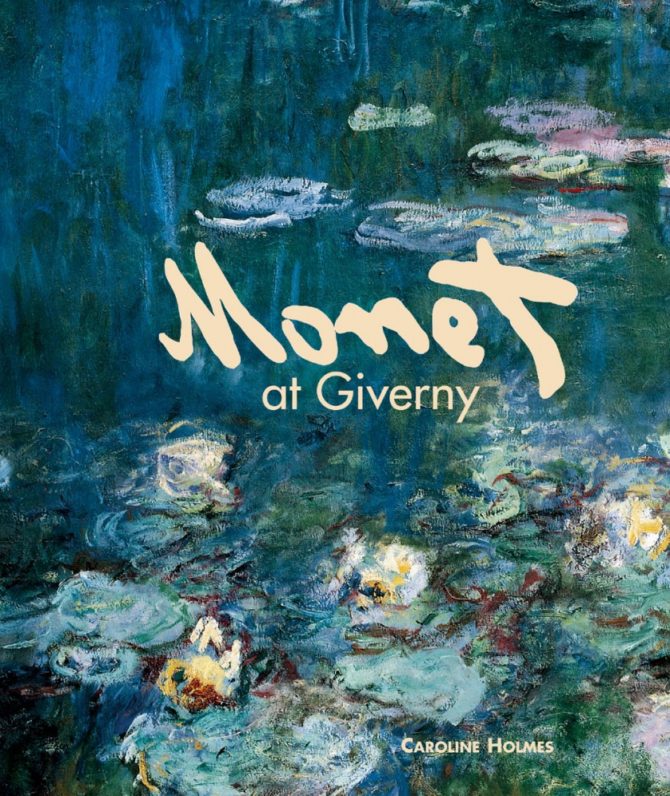Monet at Giverny

“I’m extremely busy with my garden; it’s such a joy to me, and on fine days like those we’ve had recently I am in raptures at the wonders of nature.” Thus wrote Claude Monet to a friend in 1920. The artist spent the last 43 years of his long life at Giverny, planting the flowers and creating the water garden that would be the sources of inspiration for so many of his works.
In Monet at Giverny Caroline Holmes, a garden historian and writer with a long-time love for France, has created a beautiful book that will delight lovers of Monet, Giverny or gardens in general. Interspersing beautifully reproduced details of the artist’s paintings with photographs of the gardens as they appear today, as well as historical images of the artist, his family and friends, and the gardens in their early days, the book recounts the history of the property that Monet first rented when practically penniless in 1883, then bought when his financial state improved in 1890.
Divided into three sections—The Man, The Garden and The Paintings—the lavishly illustrated book has a perfect balance of text to pictures, and the format is particularly appealing, with quotations—mostly by Monet, but a few by his friends—written in large print across many of the pages (and identified in an appendix). The author gives enough historical context to situate Monet in his artistic environment, and art lovers will appreciate the many insights into his work, including his description of the water lilies as “just the accompaniment. The essence of the motif is the mirror of water whose appearance alters at every moment.” Gardeners will enjoy the technical details of the gardens’ creation: Monet bought from nurserymen but also swapped seeds and plants with fellow gardeners including painter Gustave Caillebotte, French premier (and good friend) Georges Clemenceau, and the wives of painters Camille Pissarro and Pierre-Auguste Renoir.
The book also explores the artist’s personal life, starting with the joyful days when Giverny was new and the garden was taking shape, to the sadder moments when Monet’s eyesight was deteriorating nearly to the point of blindness: “The distortion and exaggeration of colors I see is quite terrifying…If I were condemned to seeing nature as I always see it now, I’d prefer to stay blind and just remember the beauties I have always seen.” A series of operations and corrective glasses improved his condition so that he was able to resume painting before his death in 1926.
Appendices include Monet’s Plant Palette, information on the specific plants the artist chose for his garden. All in all, this is an excellent art book that’s not only gorgeous to look at, but also an unusually good read.
Monet at Giverny by Caroline Holmes. Garden Art Press, 2011. 192 pages, $39.95
Share to: Facebook Twitter LinkedIn Email
Leave a reply
Your email address will not be published. Required fields are marked *



